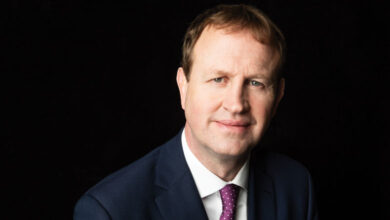Our fiscal future
 Irish Fiscal Advisory Council Chief Economist Thomas Conefrey has welcomed the Government’s progress on reducing the deficit but noted that a faster return to surplus would have been possible at the last Budget.
Irish Fiscal Advisory Council Chief Economist Thomas Conefrey has welcomed the Government’s progress on reducing the deficit but noted that a faster return to surplus would have been possible at the last Budget.
Established in 2012, the Irish Fiscal Advisory Council (IFAC) assesses Department of Finance forecasts’ compliance with domestic and European budgetary rules. Ireland’s gross domestic product (GDP) started to recover in 2012 and gross national product (GNP) – the measure of the domestic economy – caught up with that trend in 2014.
“Importantly, the recovery seems to be broadening out across different sectors of the economy,” Conefrey notes. Exports are now being backed up by underlying investments and a “small but positive” contribution from consumer spending.
At the height of the crisis, gross value added (GVA) from multi-nationals acted as a buffer “against the worst effects of the domestic contraction”. Irish-owned firms returned in growth in 2013 and tend to be more employment-intensive than their foreign-owned counterparts.
Headline GDP growth in 2014 was “flattened” by contract manufacturing whereby an Irish-located (but not necessarily Irish-owned) firm contracts out the production of goods to another country. Exports of these goods are counted as Irish in the national accounts and imports used in their production are also counted as Irish imports.
This accounts for the recent divergence between the national accounts and the CSO’s merchandise trade data i.e. a 1.0-1.2 per cent adjustment in GDP.
“It adds another layer of uncertainty to Irish GDP figures which we have always highlighted as being very volatile,” Conefrey comments.
Debt and deficit
Tax revenues for January-October 2014 were ahead of the Department of Finance’s expectations. Rising tax revenues were partly overshadowed by expenditure overruns – dominated by health spending – but the Exchequer’s position is still better than was predicted at the previous Budget.
Ireland’s creditworthiness had also significantly improved. Ireland’s probability of default stood at around 90 per cent in 2012 but is now just over 10 per cent due to the falling interest rate and fiscal consolidation. The combination of tax rises and spending cuts since 2008 totalled 18 per cent of annual GDP – “an enormous programme of consolidation by any standards.”
Revenue and expenditure were slowly being aligned again. The general government deficit represented 11.5 per cent of GDP in 2009 but is expected to fall to 2.7 per cent in 2015.
Conefrey notes: “There was a fear, and a well-founded fear, at the time that this huge programme of consolidation as introduced that it could prove to be self-defeating – that in implementing the cuts you would reduce growth so much that the deficit would fail to fall. That scenario hasn’t materialised and we have seen very significant and steady progress in reducing the gap between the State’s income and its expenditure.”
The State, though, has built up a very large overall debt, which peaked at 120 per cent of GDP in 2012 and is expected to decrease gradually over time. Official calculations suggest that general government debt will fall below 100 per cent of GDP mark in 2017.
IFAC contends that the deficit would have fallen to 1.5 per cent if the planned €2.7 billion consolidation had gone ahead and Ireland would have returned to surplus by late 2016 rather than mid-2018.
“Following through with one last consolidation effort would have all but completed the most difficult work in restoring the public finances,” he adds. The current course will bring higher debt interest payments and a higher overall debt level (€10 billion) than if the Government had followed through on its previous plans.
The deficit remained sensitive to growth shocks. Even a relatively small fluctuation in growth – e.g. 0.5 per cent – would have “a very significant impact on the public finances.”
Budget changes
One of the positive legacies of the crisis is a much-strengthened budgetary framework, comprising domestic and European rules. Taken together, the new rules should “safeguard” public finances and they allow for medium-term financial planning – a departure from the previous year-ahead basis.
Expenditure had traditionally expanded at times when the economy was also growing and vice versa in harder times. This pro-cyclicality contributed to the “overheating” of the economy and consequent spending cuts alongside recessions. Fiscal discipline is difficult to maintain “unless policy is strengthened by a credible medium-term plan.”
The medium-term profiles in Budget 2015 assume flat levels of spending and no reduction in income tax despite the commitment in the Budget. Both factors make it difficult to assess the Government’s projections for 2016 and beyond. The expenditure ceilings have been raised every year since 2012 and have been raised again but this annual trend, in Conefrey’s view, undermines the purpose of introducing those ceilings in the first instance.
“There’s the possibility of a tension between bottom-up expenditure management and top-down,” he continues. “We would prefer if expenditure forecasts were based on an assessment of underlying expenditure pressures [e.g.] if the Government estimated and projected what they expected spending to be in 2015-2016 based on a measurement of underlying demand pressures.” Ceilings would therefore be set in line with those estimated and expected pressures.
In contrast, a top-down approach determines an overall ceiling for expenditure and does not take demand pressures into account. When pressures rise, the Government is obliged to raise the ceilings.
At present, a sharp decline in the primary expenditure-GDP ratio is projected up to 2018. This is a challenging course to take but the Comprehensive Expenditure Review 2015-2017 lacks detail on how it will be achieved.
In summary, the likely achievement of reducing the deficit below 3 per cent GDP represents “very significant progress” but the opportunity to move into a ‘zone of safety’ and create a larger buffer against shocks has been missed. Conefrey expects the new budgetary framework to guard against pro-cyclicality if it is operated effectively but more detail is needed to clarify the way ahead for Ireland’s public finances after 2015.
IFAC in practice
The council’s remit can be sub-divided into its assessment of Department of Finance forecasts and the Government’s overall fiscal stance (including endorsement where appropriate), and monitoring and assessment of how the Government is complying with the budgetary rule i.e. a surplus or balance or movement at a satisfactory pace towards that position.
IFAC must also consider whether any non-compliance with the budgetary rule is a result of exceptional circumstances e.g. a severe economic downturn or other events beyond the Government’s control. The council produces two assessment reports a year and other occasional reports. All are available at www.fiscalcouncil.ie





